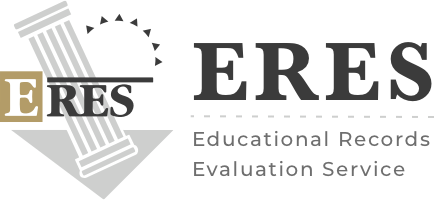Blog
Understanding the Contrast: Document-by-Document vs. Course-by-Course Evaluation

Evaluating academic credentials is an important step when seeking US equivalency of non-US education. Two main methods are used for credential evaluation: course-by-course evaluation and document-by-document evaluation. Understanding the differences between these two methods is critical in determining which one is best suited for your specific needs.
As a provider of the best credential evaluation service in the USA, ERES is committed to helping non-US-educated individuals achieve their educational and professional goals. In this blog post, we will delve into the details of course-by-course evaluation vs. document-by-document evaluation, discussing their advantages and limitations and providing guidance on choosing the appropriate method for your needs.
Document-by-Document Evaluation
Document-by-document evaluation is a basic evaluation method that assesses an individual's academic credentials, one document at a time, without comparing them to US education standards. This evaluation method does not include a detailed assessment of the individual's education.
Advantages of Document-by-Document Evaluation
Here are some advantages of document-by-document evaluation:
Cost-Effective
Document-by-document evaluation is typically less expensive than course-by-course evaluation because it involves evaluating the educational documents themselves without needing a detailed analysis of each course completed.
Quicker Turnaround Time
Document-by-document evaluation can be completed more quickly than course-by-course evaluation because it does not involve a detailed analysis of each course completed.
Simplified Process
Document-by-document evaluation is more straightforward because it involves evaluating the educational documents themselves rather than assessing each course completed.
Limitations of Document-by-Document Evaluation
A document-by-document evaluation does not provide a comprehensive assessment of an individual's education. It does not compare an individual's education to US standards, making it difficult for employers or academic institutions to understand their education.
Common Scenarios Where Document-by-Document Evaluation Is Used
Document-by-document evaluation is commonly used when applying for a job or immigration to the United States. In such cases, employers or immigration departments may require a basic evaluation of an individual's academic credentials.
It may also be suitable for individuals who have completed education in systems vastly different from the US education system, where it may be difficult to compare individual courses to US courses.
Course-by-Course Evaluation
A course-by-course evaluation is a detailed assessment method that evaluates an individual's education, comparing it to US education standards course-by-course. This evaluation method provides a detailed assessment of an individual's education, including the US equivalent grades and credit hours.
Advantages of Course-by-Course Evaluation
Here are some advantages of course-by-course evaluation:
Detailed Evaluation
Course-by-course evaluation provides a detailed evaluation of an individual’s academic credentials. It assesses each course completed by the individual and compares it to equivalent US courses.
Accurate Assessment
This method accurately assesses an individual’s education and qualifications. It takes into consideration the coursework completed, the grading system used, and the level of education attained.
Greater Acceptance
Course-by-course evaluation is generally more widely accepted by US universities, colleges, and employers. It provides a more comprehensive understanding of an individual’s education and qualifications, making it easier for US institutions to determine eligibility for admission or employment.
Limitations of Course-by-Course Evaluation
The main limitation of course-by-course evaluation is that it is more expensive and time-consuming than document-by-document evaluation. This type of evaluation requires a thorough assessment of each course, which can take a long time.
Common Scenarios Where Course-by-Course Evaluation Is Used
A course-by-course evaluation is commonly used when an individual wants to enroll in a US college or university. It can also facilitate the transfer of credits earned outside the US to US institutions.
In some cases, professional licensure in the US requires a course-by-course evaluation of an individual's education. This evaluation method can help individuals meet the education requirements necessary for professional licensure.
Difference Between Course by Course and Document by Document Evaluation
The primary difference between document-by-document evaluation and course-by-course evaluation is the level of detail. A course-by-course evaluation is more detailed and accurate than a document-by-document evaluation.
Factors to Consider When Choosing Between an Evaluation Service
When choosing between document-by-document evaluation and course-by-course evaluation, the primary factors to consider are the purpose of the evaluation, the cost, and the level of detail required. If you need a detailed assessment of your education, a course-by-course evaluation is the better option.
A document-by-document evaluation may be more appropriate if cost and time are significant factors. Ultimately, the choice between the two depends on the specific needs and requirements of the individual.
How to Choose the Right Evaluation Method
Now that you understand the details regarding course-by-course evaluation vs. document-by-document evaluation, you are all set to choose the appropriate evaluation method. Here are some steps to help individuals choose the right evaluation method:
Step 1 – Understanding the Requirements of the Organization or Institution
Before choosing an evaluation method, it is essential to understand the requirements of the organization or institution that requires the evaluation. Check their website or contact them to know which type of evaluation they accept. This information can help you decide which evaluation method is best suited for your needs.
Step 2 – Seeking Advice from Experts in the Field
It is advisable to seek advice from experts in credential evaluation to help you choose the right evaluation method. Experts can guide the type of evaluation method you need based on your education and the purpose of the evaluation.
Step 3 – Choose a Reputable Evaluation Service
Choosing a reputable evaluation service recognized and accepted by the organization or institution to which you intend to submit your credentials is important. Research and compare different evaluation services to ensure they provide accurate and reliable evaluations.
Conclusion
Understanding the differences between document-by-document and course-by-course evaluation is crucial when evaluating academic credentials earned outside the United States.
The appropriate evaluation method depends on the specific requirements of the organization or institution where the evaluation will be submitted, the level of detail needed, and the purpose of the evaluation. Seeking advice from experts in the field can also help make an informed decision.
If you are in need of a credential evaluation service, ERES can help. Contact us to learn more about our services and how we can assist you in obtaining the US equivalency of your academic credentials.
Start Now
ERES
Educational Records Evaluation Service helps Non-US educated individuals to receive their US equivalences with our credential evaluation reports.
Services
Contact us
Tue - Fri: 10:00 to 16:00 ( PST )
4773 Mangels Blvd, Fairfield, CA 94534, USA.
© 2025 Educational Records Evaluation Service. All rights reserved.











